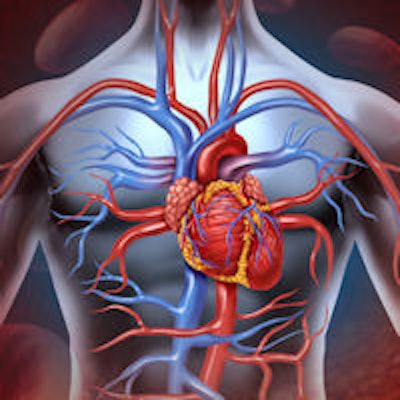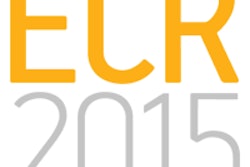
Cardiac screening shouldn't be performed on patients at low risk for coronary heart disease (CHD), as it doesn't improve patient outcomes and comes with potential harms due to false-positive results, according to a paper published on Monday in the Annals of Internal Medicine by the American College of Physicians (ACP).
Cardiac screening with resting or stress electrocardiography, stress echocardiography, or stress myocardial perfusion imaging (MPI) is likely to be particularly inefficient in low-risk patients, since it offers low prevalence and predictive values in this patient group, wrote Dr. Roger Chou, from Oregon Health and Science University, on behalf of ACP's High Value Care Task Force. Furthermore, positive findings from screening have a low likelihood of affecting treatment decisions.
"Implementing recommendations that focus on initial cardiovascular risk assessment based on traditional cardiovascular risk factors and using a global risk score, addressing modifiable risk factors, and not performing additional cardiac screening in low-risk patients would improve patient care while avoiding unnecessary harms and costs," Chou wrote.
Inappropriate testing?
Cardiac screening with tools such as medical imaging can identify findings associated with higher risk for cardiac events, but several professional organizations such as ACP have pointed to inappropriate cardiac testing in low-risk adults as one of the most overused clinical practices, according to the report. As a result, the task force set out to provide clinicians with practical advice on cardiac screening with electrocardiograms (ECGs), stress echo, and MPI; the use of coronary CT or nontraditional risk factors such as C-reactive protein levels or carotid intima-media thickness was not included in the analysis.
The study relied on evidence from a systematic review and recommendations from the U.S. Preventive Services Task Force (USPSTF) on screening with ECG, guidelines and standards from the American College of Cardiology developed in conjunction with other societies, and articles on cancer screening's yield, benefits, and harms, according to the author (Ann Intern Med, March 17, 2014, Vol. 162:6, pp. 438-447).
Currently, USPSTF and other groups recommend against the use of rest or exercise ECG to screen low-risk adults. In addition, the American College of Cardiology Foundation and the American Heart Association both recommend against the use of stress echocardiography or MPI for assessing cardiovascular risk in low-risk, asymptomatic adults, according to Chou.
"These recommendations are based on the lack of evidence showing that screening improves clinical outcomes, unclear effects on risk reclassification and the use of risk-reducing therapies, and the relatively low prevalence of disease," he wrote. "Appropriate use criteria have also been developed to help evaluate imaging use patterns and identify areas of overuse and underuse. Consistent with clinical practice guidelines, appropriate use criteria jointly developed by several professional societies classify screening of low-risk adults as generally not appropriate."
The lack of a proven, effective treatment for many of the abnormalities found during cardiac screening may be one reason why the practice is ineffective, Chou noted.
"The effectiveness of cardiac screening in low-risk adults is also limited by the small number of patients who might benefit from revascularization," he wrote.
Potential harms
Cardiac screening in this patient population can result in a number of harmful effects. Resting ECG studies seem to have trivial direct harms, while exercise ECG is associated with a minimal level, according to Chou. The use of radionuclide tracers in MPI does provide radiation exposure, however.
Other harms from screening may occur due to false-positive results, Chou noted.
"Although the accuracy of stress imaging is higher than that of stress ECG, the positive predictive value is still relatively low," he wrote.
Based on a positive likelihood ratio for stress echocardiography of 8.6 (confidence interval: 5.9 to 12), in a population with a pretest probability of CHD of 5%, less than one-third of individuals (31%) would be found to actually have disease after a positive test result.
Even in patients with true-positive screening results, there can be harmful effects due to labeling, health insurance denials, or higher insurance premiums, Chou wrote. Follow-up testing and interventions can also lead to harms.
Despite these shortcomings and concordance among clinical practice guidelines, the use of cardiac screening tests may actually be increasing, according to Chou. Several studies have reported an increase in ECG screening, while in cardiac stress imaging, three studies "found that about 15% of stress MPI and echocardiography examinations did not meet appropriateness criteria, with evaluation of low-risk, asymptomatic patients accounting for about half of the cases in two studies and 25% in the other," he wrote.
Factors behind screening
Why is the use of cardiac screening growing? Clinicians may overestimate the benefits of revascularization, underestimate harms, and overlook false-positive results and harms from downstream tests and interventions. They may also assume that negative test results can offer some benefit by reassuring patients.
Financial incentives may also play a role, as alluded to in a study that found higher relative increases in Medicare payments for MPI scans to cardiologists as compared with radiologists. Another study found that physicians who billed for both technical and professional fees were more likely to perform follow-up stress MPI and echocardiography studies after revascularization procedures than those who didn't bill for those services, according to Chou.
Patients may also overestimate the effectiveness of early detection and preventive interventions. In addition, direct-to-consumer cardiac screening services, "which often include ECG and other cardiac testing, can bypass clinicians seeking to serve as conscientious gatekeepers," he wrote.
"Such screening often takes advantage of consumer concerns about cardiac disease and promotes messages of patient empowerment but provides little in the way of informed decision-making, clinical oversight, or follow-up," Chou wrote.
In addition, cardiac testing may be overused due to the perceived risk of missing a serious diagnosis, and it can be viewed as a method for protecting against lawsuits.
"To be most effective, efforts to reduce the use of imaging should be multifocal and should address clinician behaviors, patient expectations, direct-to-consumer screening programs, and financial incentives," he wrote.
For example, clinicians should be incentivized based on the delivery of appropriate care and not primarily on patient satisfaction. Efforts aimed at curbing overuse influenced by physician self-referral are also important.
There's a need for greater oversight of direct-to-consumer cardiovascular screening, including requirements for informed consent, counseling, and access to follow-up care, according to Chou. While it can be difficult to decrease the amount of inappropriate testing in clinical practice, efforts that are more active and include individualized feedback are more likely to be effective.
"The use of health information technology, such as computer-based reminders about appropriate indications for testing at the time the order is placed, is another promising strategy," Chou wrote.





















